Graham Reid | | 6 min read
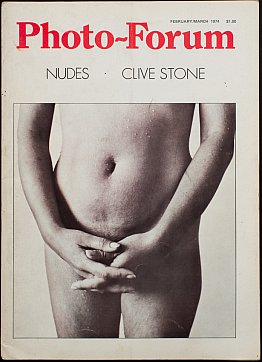
The forthcoming Rim Books publication of PhotoForum at 40: Counterculture, Clusters, and Debate in New Zealand will mark four decades since PhotoForum was founded. Perhaps the society no longer has the profile it enjoyed in its first 10 years, when it published a bi-monthly magazine, but PhotoForum is still going strong.
There is a comprehensive website, frequent exhibitions, and associated books and periodicals continue to be produced. Although these publications may appear less frequently, they still strive to achieve the highest possible production values, a goal that was aimed for but not always achieved when the magazine was in its Seventies heyday.
The quality will be evident when the printed copies of PhotoForum at 40 become available later this month.
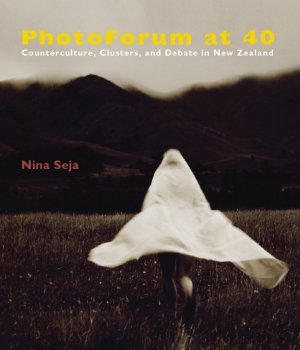 The 300-page book contains an
impressive mix of history, photographs, documents, correspondence,
interviews and cultural commentary. Another worthwhile addition is a
chronology of New Zealand photography from 1950 to 2014, alongside a
chronology of PhotoForum publications, exhibitions and activities
over the same period.
The 300-page book contains an
impressive mix of history, photographs, documents, correspondence,
interviews and cultural commentary. Another worthwhile addition is a
chronology of New Zealand photography from 1950 to 2014, alongside a
chronology of PhotoForum publications, exhibitions and activities
over the same period.
To complement the book and the 40th anniversary, a Pecha Kucha night of artists’ talks will be held at Q Theatre from 7:30pm on Wednesday June 4.
History in the Taking, an exhibition of selected photographs and ephemera, will be held at the Gus Fisher Gallery, in conjunction with the Auckland Festival of Photography, opening on June 6 and running for the rest of the month.
With these forthcoming events, the time seemed right to examine the legacy of the society, its present activities and future plans, with Nina Seja, the book’s author, and Geoffrey H. Short, the current director of PhotoForum and co-curator with Seja of the exhibition.
Looking back at PhotoForum’s origins, both Seja and Short agreed that if they were asked to name one central figure in the society’s history it would be co-founder John B. Turner, who set the tone and direction of PhotoForum at its inception, and continues to be an influence and inspiration now.
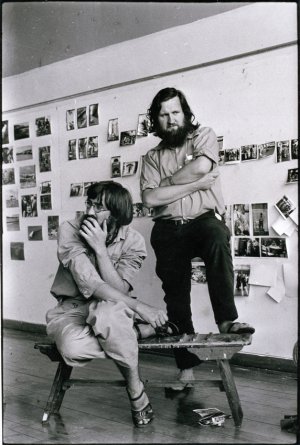 Turner
moved to Auckland in 1971 to take up the role of lecturer in
photography at Elam, and PhotoForum was founded at the end of 1973.
Turner had already been involved in the publication of two
periodicals, Photographic Art and History and then New Zealand
Photography, between the years 1970 and 1973. It was an idealistic
time, as the social and cultural impact of the 1960s belatedly washed
over New Zealand, bringing fresh ideas and idealistic responses to
new challenges.
Turner
moved to Auckland in 1971 to take up the role of lecturer in
photography at Elam, and PhotoForum was founded at the end of 1973.
Turner had already been involved in the publication of two
periodicals, Photographic Art and History and then New Zealand
Photography, between the years 1970 and 1973. It was an idealistic
time, as the social and cultural impact of the 1960s belatedly washed
over New Zealand, bringing fresh ideas and idealistic responses to
new challenges.
The original intention of the society was to promote photography as an artistic and expressive medium, and to encourage co-operation and collaboration amongst the photographic community. It was also important to Turner and the other PhotoForum founders that photography in New Zealand should be liberated from the strict rules and ethos of camera clubs and the influence of pictorialism.
It was time for a new approach, although the first edition of PhotoForum magazine in February 1974 fell back on a proven attention-grabbing device, by putting a nude on the cover.
It was a deliberate attempt to draw attention to the new society, and create controversy, although in some towns it only pushed the magazine immediately onto the top shelf or into a paper bag under the counter. But with subsequent issues the magazine established itself as a channel of communication for a receptive national audience, many eager to contribute their own work as well as view the best images from the whole country.
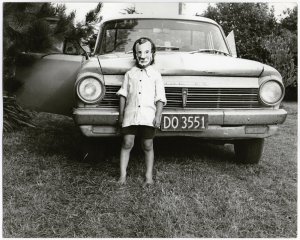 PhotoForum
was building a community, and Turner was at the centre of it. His
home became a social hub for photographers, and his personal
collection of photography books and periodicals was far more
comprehensive than the Elam library could offer at the time. Turner
acted as both mentor and critic of aspiring photographers such as
Lucien Rizos, who felt that Turner was PhotoForum, and that “he,
single handedly, made me feel that I was doing something worthwhile.”
However it wasn’t all good vibes. Tensions erupted as some found
favour with PhotoForum, and others felt overlooked, left out of the
loop, or dismissed entirely. To Turner’s credit he reached out to
the critics, published their views, and invited them to participate.
PhotoForum
was building a community, and Turner was at the centre of it. His
home became a social hub for photographers, and his personal
collection of photography books and periodicals was far more
comprehensive than the Elam library could offer at the time. Turner
acted as both mentor and critic of aspiring photographers such as
Lucien Rizos, who felt that Turner was PhotoForum, and that “he,
single handedly, made me feel that I was doing something worthwhile.”
However it wasn’t all good vibes. Tensions erupted as some found
favour with PhotoForum, and others felt overlooked, left out of the
loop, or dismissed entirely. To Turner’s credit he reached out to
the critics, published their views, and invited them to participate.
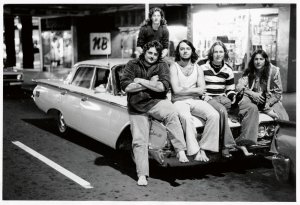 PhotoForum
may have raised the profile of photography, and helped launch some
careers, but it wasn’t as if fortunes were being made. The first
issue of PhotoForum lost money and it was a struggle to keep the
organization and a bi-monthly magazine afloat based only on society
subscriptions, limited print advertising and magazine sales alone.
PhotoForum
may have raised the profile of photography, and helped launch some
careers, but it wasn’t as if fortunes were being made. The first
issue of PhotoForum lost money and it was a struggle to keep the
organization and a bi-monthly magazine afloat based only on society
subscriptions, limited print advertising and magazine sales alone.
The issue of funding continues for PhotoForum today. The society has always depended on volunteers and Geoffrey Short admits that people who become involved often burn out, as there are too few people doing too much of the work. Sometimes people want to become involved but are put off by the traditional society structure. There are formalities to be observed, with meetings and minutes.
 However Short
sees advantages in the society maintaining this approach and
sustaining itself, rather than seek funding, which is great while it
lasts but disastrous if it ends unexpectedly. As an example, Short
points to the Queensland Centre of Photography, which was forced to
shut its exhibition venue in Brisbane when state funding was cut in
April this year.
However Short
sees advantages in the society maintaining this approach and
sustaining itself, rather than seek funding, which is great while it
lasts but disastrous if it ends unexpectedly. As an example, Short
points to the Queensland Centre of Photography, which was forced to
shut its exhibition venue in Brisbane when state funding was cut in
April this year.
Our discussion turns to the forthcoming exhibition. Short is planning to base the photographic selection largely on those photographs chosen for the book, plus a selection from the University of Auckland collection, and archival material and ephemera from the PhotoForum archive and John B. Turner’s collection.
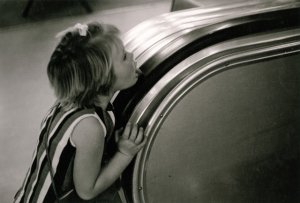 The material will be
displayed in a sequence that will tell a visual story and allow the
viewer to make connections. One aspect he wants to emphasise where
possible is the progression between the tentative early works and
confident later works of the photographers. Original prints will be
used if they are available. Some viewers may be surprised how few of
the earlier images were printed any larger than 8” x 10” size,
either for reasons of economy or the limitations of the darkroom
equipment.
The material will be
displayed in a sequence that will tell a visual story and allow the
viewer to make connections. One aspect he wants to emphasise where
possible is the progression between the tentative early works and
confident later works of the photographers. Original prints will be
used if they are available. Some viewers may be surprised how few of
the earlier images were printed any larger than 8” x 10” size,
either for reasons of economy or the limitations of the darkroom
equipment.
The potential and limitations of technology have gone hand-in hand with photography since it was invented. High quality is now available to anyone with the means to pick up a camera and shoot, so where does PhotoForum now fit with the new photography?
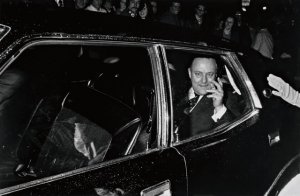 Nina Seja agrees that
the digital age means photographic images are everywhere, but feels
that many are like junk food, immediately gratifying but they don’t
hold the attention.
Nina Seja agrees that
the digital age means photographic images are everywhere, but feels
that many are like junk food, immediately gratifying but they don’t
hold the attention.
Short mentions the photographic academic and historian Fred Ritchin, and his theory that what we now call digital photography actually needs a new name, one that will encompass the aspects of digital images that we take for granted, such as immediacy and accessibility.
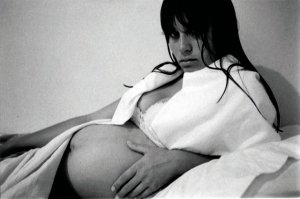 It will take time, but the new name will
eventually emerge.
It will take time, but the new name will
eventually emerge.
For now, Short believes that PhotoForum has stayed true to the vision of its founders, and will continue to have a role in mentoring photographers, encouraging personal expression and the creation of worthwhile images that will have resonance in the future.
For further information on PhotoForum see its website here.
Images above used with permission are by Barney Brewster (PhotoForum at 40 cover), Simone Van Delden (Max Oettli and John Turner, 1974), Simon Buis (Boy, Huapai 1970), Murray Cammick (1060 Fairlane with regulars, sumer 1976-77), Julian Ward (Oriental Bay, 1994), Max Oettli (Department store, 1972), Reg Fuez (Winter Campaigner c. 1975) and Gary Baigent (Samantha Groves, 1969)
Jonathan Ganley is an Auckland photographer and writer whose has frequently appeared at Other Voices Other Rooms (see here). His work has covered many subjects, notably New Zealand musicians. Some of those portraits appeared at Other Voices Other Rooms here, and a gallery of his work is available at his websitepointthatthing.com All his photos are copyrighted, do not use without permission.
Other Voices Other Rooms is an opportunity for Elsewhere readers to contribute their ideas, passions, interests and opinions about whatever takes their fancy. Elsewhere welcomes travel stories, think pieces, essays about readers' research or hobbies etc etc. Nail it in 1000 words or fewer and contact graham.reid@elsewhere.co.nz.
See here for previous contributors' work. It is wide-ranging.


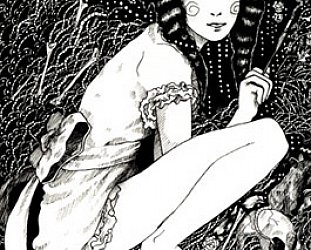

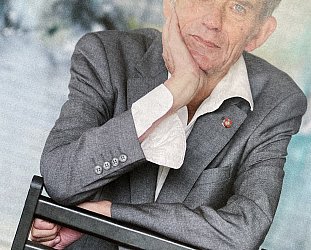
post a comment